JHP or FMJ?: Is There a ‘Right’ Ammo for Self-Defense?
Eve Flanigan 04.10.19
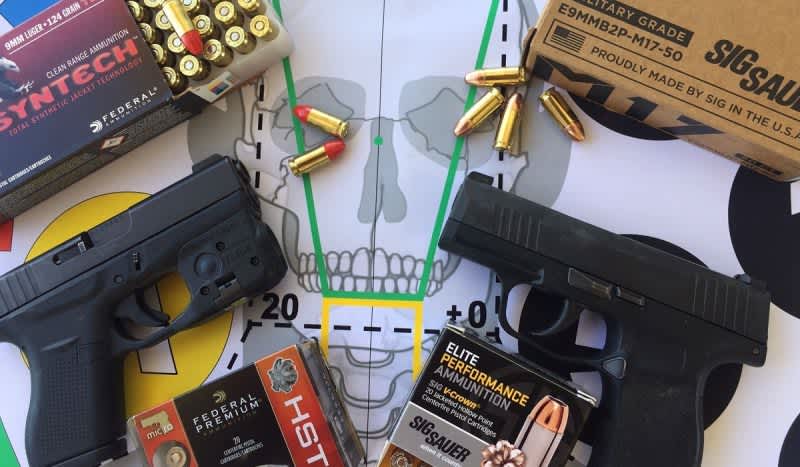
In discussions regarding concealed carry, I often encounter interesting assumptions about whether full metal jacket (FMJ) or its close equivalent, total synthetic jacket (TSJ) ammunition is preferable for daily carry compared to jacketed hollow point (JHP or simply HP).
This article aims to inform readers on the performance of these major ammo types in lay terms, and hopefully put minds at ease about ammunition selection.
A crash course in ammo definition
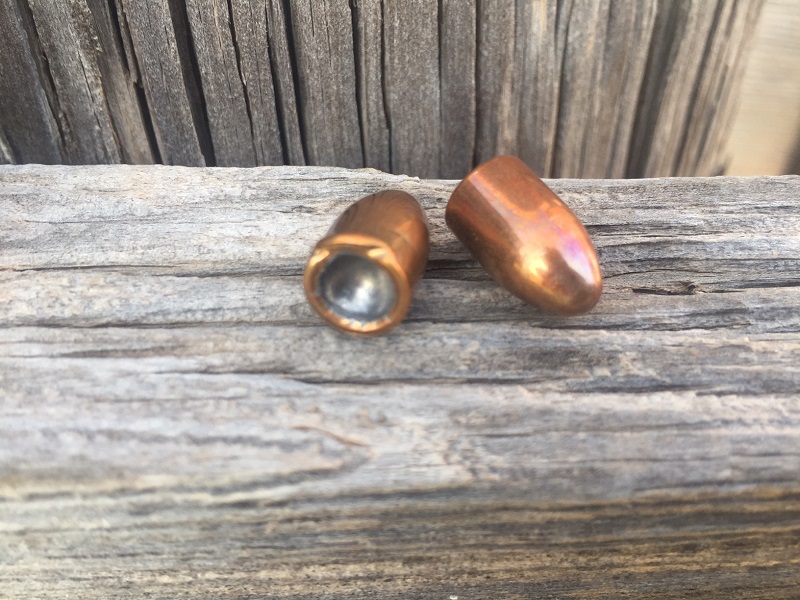
FMJ refers to a bullet, usually made of lead, coated with a substance that makes for cleaner performance and handling. That coating is often copper. For purposes of a self-protection discussion, also included in this category are uncoated bullets like wad cutters and semi-wad cutters. When fired from a rifled barrel, the tendency of FMJ-type bullets, when striking a solid object, is to penetrate and continue on a fairly predictable arc.
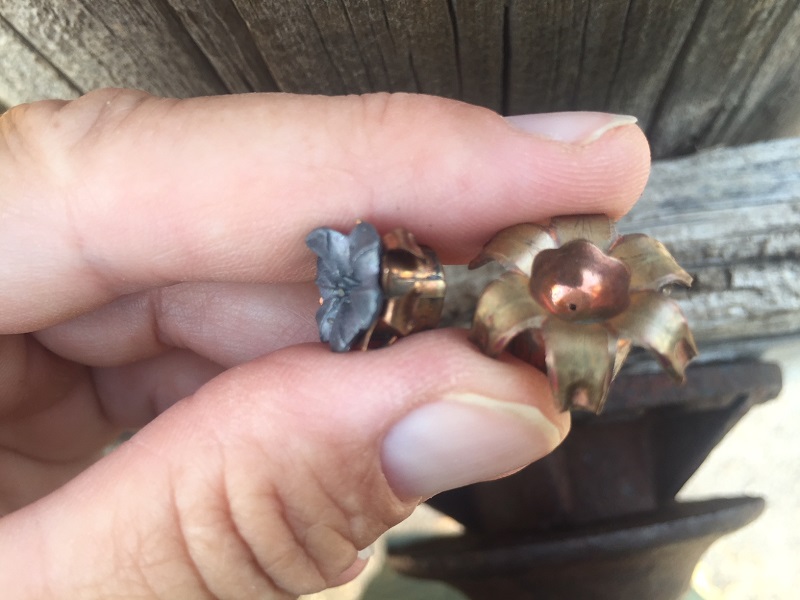
Hollow point bullets are usually jacketed as well around the conical exterior. Lead is usually visible inside the hollow tip. Some HP-type ammunition features an insert of synthetic material in the point itself. For purposes of this discussion, synthetic-filled hollow points and even HP frangible ammunition are included in the HP category. A later article will address frangible ammunition, which is in a class of its own where bullet construction is concerned. When fired from a rifled barrel, the tendency of HP ammo is to penetrate permeable objects a certain distance, and then expand or fragment while still penetrating, causing more displacement of tissue than FMJ, as it travels. This displacement can be better understood by watching ammunition testing videos, as it can appear less dramatic when the gel block “recovers” from impact.
Defining ammunition performance
The angle and density of the struck object(s), as well as the speed and weight of the bullet, are the major influencers of how and where a bullet travels. Where defensive ballistics are concerned, FBI test protocols are the current comparative standard. The protocol involves firing into the end of a rectangular gelatin block approximately the same density of human muscle. The block is tested undraped first, then draped with approximations of seasonal clothing as well as barriers such as wood, drywall, and steel. There is a quite scholastic, informative presentation on gel testing undertaken and shown on YouTube by Lucky Gunner.
Standards for testing include depth of penetration and, for expanding or fragmenting rounds, the comparative circumference or weight of the bullet before and after firing. Rounds intended for self-protection should generally stay between nine and 15 inches of penetration—the distance past clothes, skin, bone, and muscle, and into vital organs, from typical entry points on a human.
0669: Speer Gold Dot 40 SW made all but two pieces of this apple disappear when shot from 7 yards.
Ammo and ethics
Bullet testing standards sound brutal? That discussion strikes many as such. After all, the bodily damage shock-and-awe argument has been used in courts of law to add emotional impact to testimony, usually with the aim of showing depraved intent on the part of the person wielding a gun loaded with HP. It’s a loaded, catchy argument—and in the case linked here, perhaps the shoe fit a person with murderous aims.
Put aside emotion long enough to examine legal and ballistic logic. Here are some points to keep in mind:
- The purpose of any shot fired in necessary protection of oneself or another innocent is not to kill. The purpose is not to maim. The purpose is to stop the attack.
- Unless the first shot is the extremely rare one that takes out the central nervous system, many more may be needed. The human body, much of the skull included, is a fairly robust structure in comparison to the damage most handgun rounds wreak. Even if a fatal shot is fired, say, through the heart or major artery, the attacker can still perform his or her own deadly deeds for up to 12 seconds. That’s a veritable eternity under the circumstances. Short of an immediate CNS hit, the length of your counterattack depends entirely on the determination of your attacker.
- There is never a guarantee against so-called overpenetration. Bad guys don’t stand still like paper targets. The center mass shot you aimed for may instead hit an extremity or thinner body part, exit, and keep going on to whatever is next in the way. In a concealed carry world where there are other innocents around, the defensive shooter bears the mantle of responsibility for where each round lands.

With these factors in mind, hollow points, with their limited capacity for penetration and greater chance of performing in a way that will stop the attacker with fewer shots, start to sound attractive. When one remembers “there’s a lawyer attached to every round you fire,” and the greater possibility of FMJ rounds traveling through the target and beyond, HP sounds like the more responsible choice.
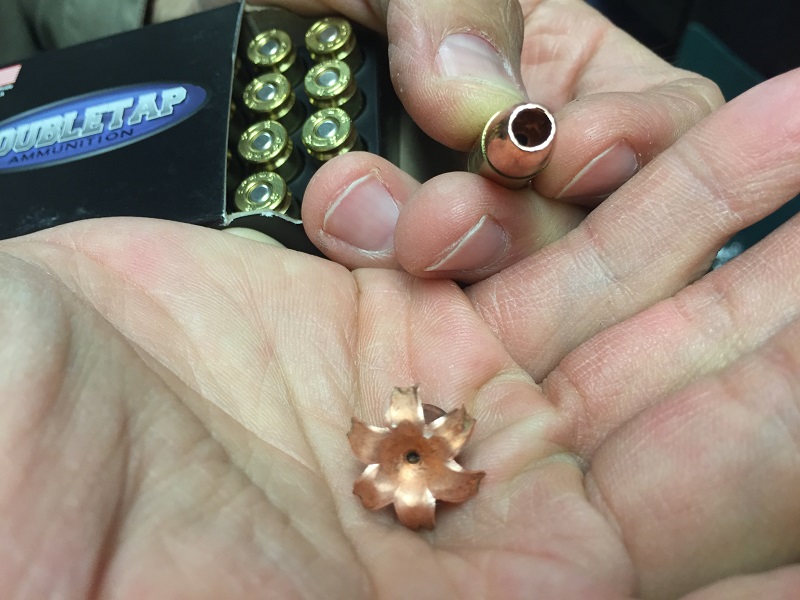
At the end of the day
This has been a crash course for the novice concealed carrier on ammunition choices. Ammo companies and some parts of our own government have gone to great lengths to analyze the expected performance of thousands of bullet/caliber combinations. Ammunition manufacturers spend lots of money trying to convince you that their product is best. While it’s probably obvious that this shooter and instructor believes HP is preferable for self-protection, keep these things in mind:
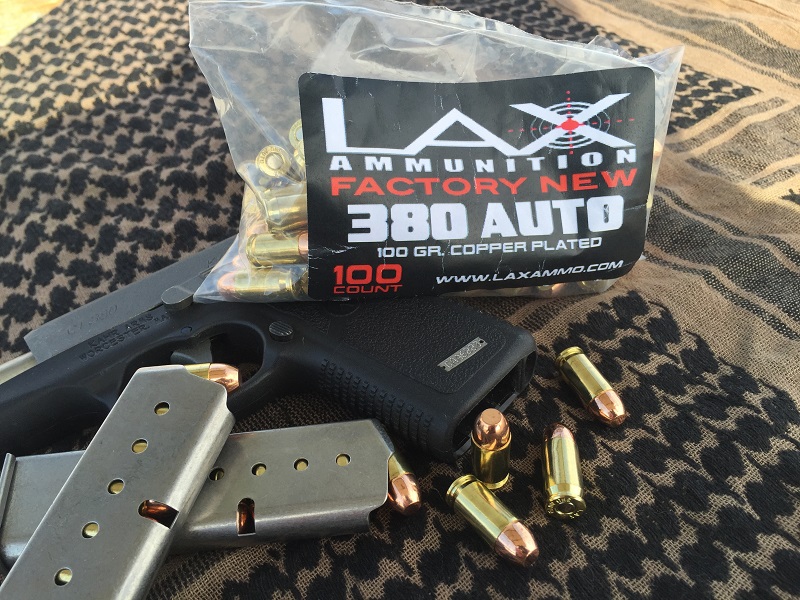
- Real situations are never as perfect as gel block testing. People move. Criminals come in many shapes and sizes. There is no guarantee your ammo will perform the same as it did in a controlled environment.
- The best HP ammunition can cost you much more than $20 per box of 20 if it doesn’t work in your gun. Test a few of your chosen carry rounds from every batch you buy to be sure they work in your gun, before you need them.
- Shot placement beats all. The best ammo on the planet is useless in your gun if you can’t hit what you’re aiming at. Train! If participating in structured training that makes you a better shooter is too costly, and you decide HP ammo is unaffordable, FMJ will work just fine, so long as you make accurate hits!
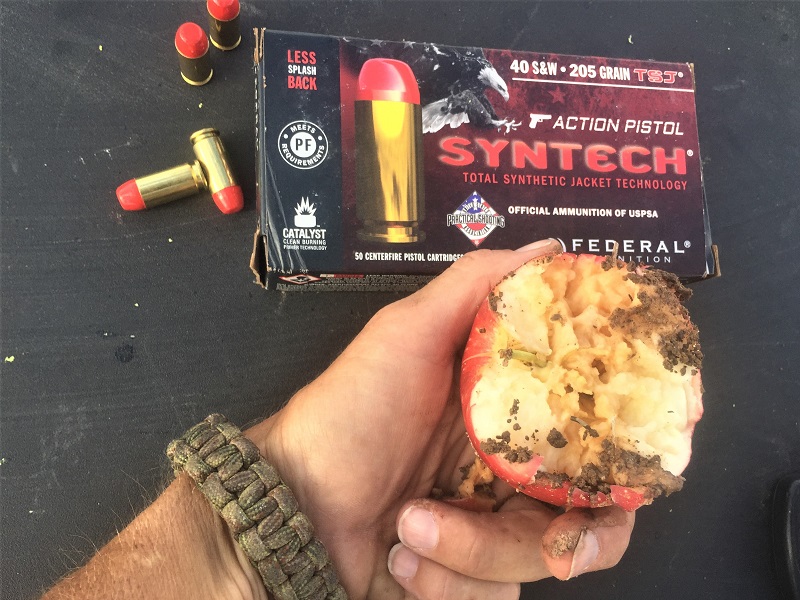
We live in a great time when ammunition development is a thoroughly developed, consumer-accessible science. Studying ammo performance can be fascinating, but don’t let academic or consumer obsessions distract you from the fact that accurate hits are what only you can bring to the table to get the best out of whatever ammo you choose.

